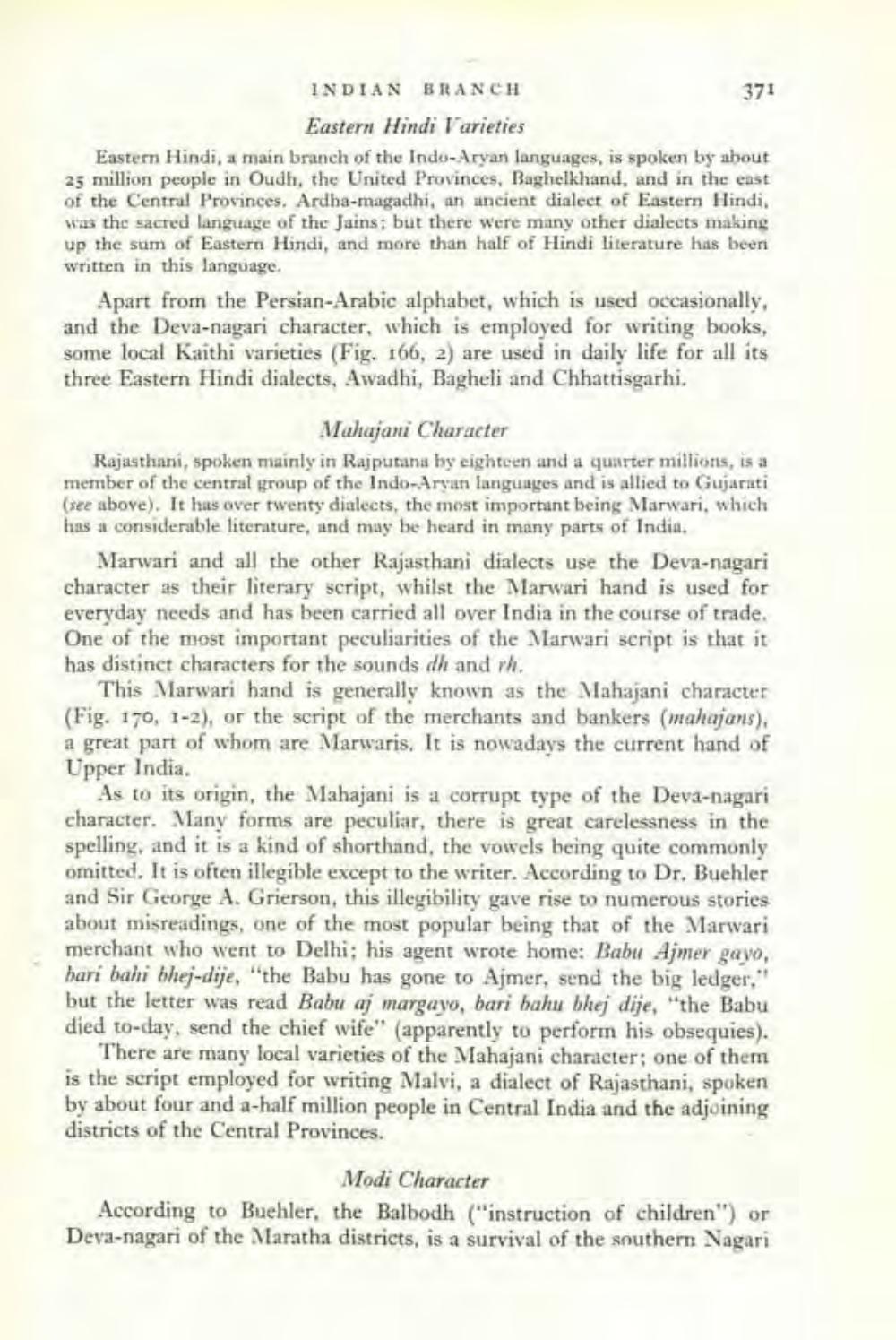________________
INDIAN BRANCH
Eastern Hindi Varieties
Eastern Hindi, a main branch of the Indo-Aryan languages, is spoken by about 25 million people in Oudh, the United Provinces, Baghelkhand, and in the east of the Central Provinces. Ardha-magadhi, an ancient dialect of Eastern Hindi, was the sacred language of the Jains; but there were many other dialects making up the sum of Eastern Hindi, and more than half of Hindi literature has been written in this language.
371
Apart from the Persian-Arabic alphabet, which is used occasionally, and the Deva-nagari character, which is employed for writing books, some local Kaithi varieties (Fig. 166, 2) are used in daily life for all its three Eastern Hindi dialects, Awadhi, Bagheli and Chhattisgarhi.
Mahajani Character
Rajasthani, spoken mainly in Rajputana by eighteen and a quarter millions, is a member of the central group of the Indo-Aryan languages and is allied to Gujarati (see above). It has over twenty dialects, the most important being Marwari, which has a considerable literature, and may be heard in many parts of India.
Marwari and all the other Rajasthani dialects use the Deva-nagari character as their literary script, whilst the Marwari hand is used for everyday needs and has been carried all over India in the course of trade. One of the most important peculiarities of the Marwari script is that it has distinct characters for the sounds dh and rh.
This Marwari hand is generally known as the Mahajani character (Fig. 170, 1-2), or the script of the merchants and bankers (mahajans), a great part of whom are Marwaris. It is nowadays the current hand of Upper India.
As to its origin, the Mahajani is a corrupt type of the Deva-nagari character. Many forms are peculiar, there is great carelessness in the spelling, and it is a kind of shorthand, the vowels being quite commonly omitted. It is often illegible except to the writer. According to Dr. Buchler and Sir George A. Grierson, this illegibility gave rise to numerous stories about misreadings, one of the most popular being that of the Marwari merchant who went to Delhi; his agent wrote home: Babu Ajmer gayo, bari bahi bhej-dije, "the Babu has gone to Ajmer, send the big ledger," but the letter was read Babu aj margayo, bari bahu bhej dije, "the Babu died to-day, send the chief wife" (apparently to perform his obsequies).
There are many local varieties of the Mahajani character; one of them is the script employed for writing Malvi, a dialect of Rajasthani, spoken by about four and a-half million people in Central India and the adjoining districts of the Central Provinces.
Modi Character
According to Buehler, the Balbodh ("instruction of children") or Deva-nagari of the Maratha districts, is a survival of the southern Nagari




